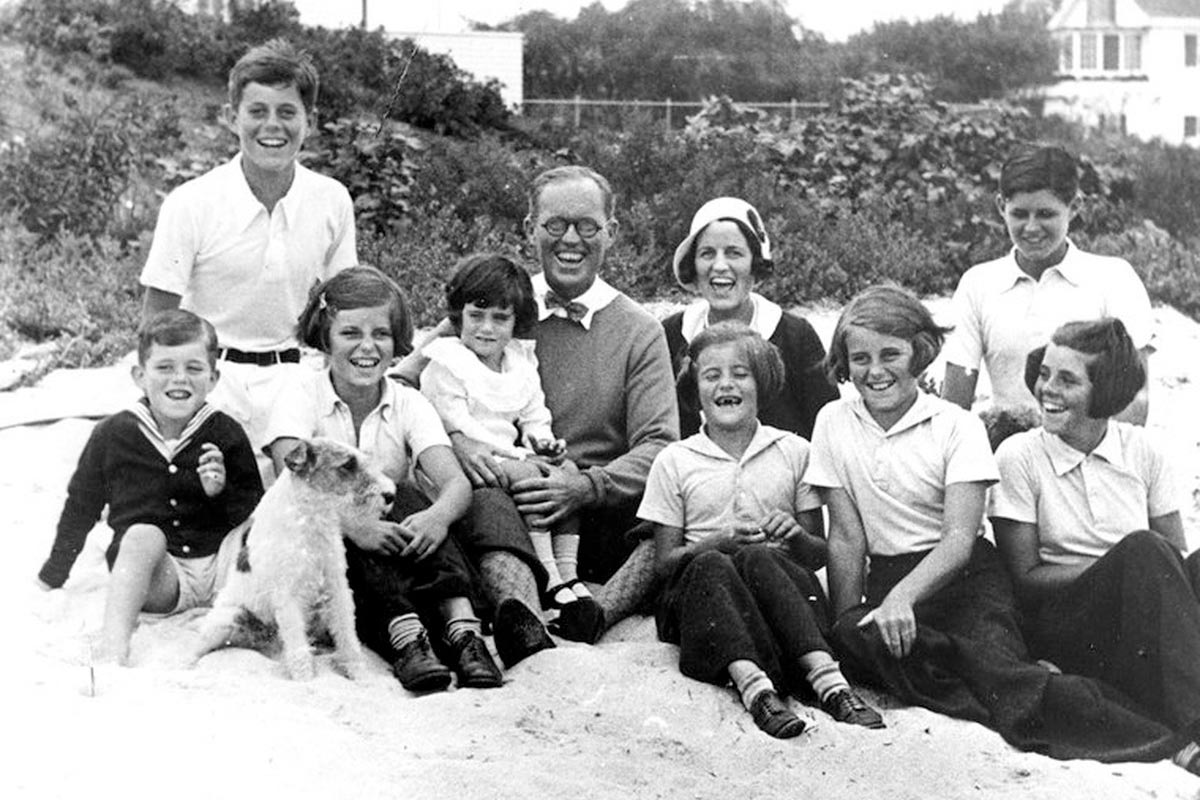Political historian Barbara Perry can recall facts and stories about the Kennedy family with the ease of an old friend.
Sitting in her office at the University of Virginia’s Miller Center, Perry – the center’s director of presidential studies – leafs through books, photos and even an original letter written in Jacqueline Kennedy’s sloping hand as she talks about Joseph and Rose Kennedy’s nine children and their profound impact on American politics.
Perry can trace her firsthand knowledge of the family back to the tender age of 4, when she attended a 1960 campaign rally for future president John F. Kennedy with her mother and two brothers. Now, she is among the nation’s foremost experts on the American presidency in general and the Kennedy family in particular. Among the many books she has written are biographies of family matriarch Rose Kennedy, First Lady Jacqueline Kennedy Onassis and Sen. Edward Kennedy.
Most recently, Perry joined a handful of other experts featured on a new CNN documentary, “American Dynasties: The Kennedys.” The six-part series airs on Sunday nights at 9 p.m. and is now on its third episode. It includes commentary from experts like Perry and from a new generation of Kennedys, analyzing how their famous family members and their relationships changed the world as we know it today.
As the documentary airs, we asked Perry to share a few lesser-known facts about a family that has fascinated generations of Americans.
Life in ‘Camelot’
1. Soviet leader Nikita Khrushchev sent Jaqueline Kennedy puppies.
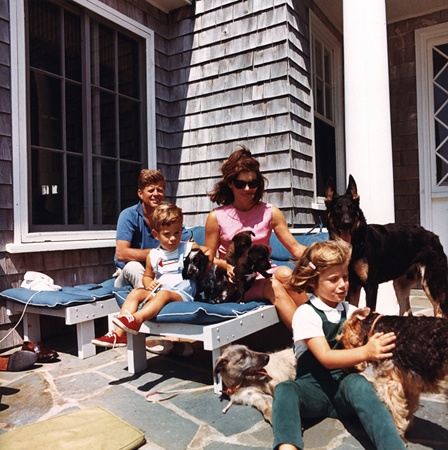
The four Kennedys with their family dogs and the two puppies from Khrushchev, in Jackie’s lap. (Photo by Cecil Stoughton, White House Photographs, John F. Kennedy Presidential Library and Museum)
When John F. Kennedy was inaugurated in 1961, the young first family and active Kennedy clan ushered in a new age of glamour in Washington, D.C., despite an ongoing Cold War. First Lady Jacqueline Kennedy even charmed the grim Soviet premier, Nikita Khrushchev, during a 1961 summit in Vienna, her husband’s first meeting with his Cold War foe.
“The Washington Post wrote that he looked like a Russian schoolboy on the banks of the Volga when the snow melts in the springtime,” Perry said. “He was very taken with her.”
Khrushchev was seated next to Jackie at dinner and she asked him about the dogs the Soviet Union had recently launched into space to study the effects of a zero-gravity environment.
A few weeks later, a crate of puppies arrived at the White House, much to the delight of the president’s two children, Caroline and John Jr. The puppies, the offspring of a dog that returned safely from space, joined the Kennedy family’s large tribe of pets.
2. JFK loved to play word games with Caroline and John Jr.
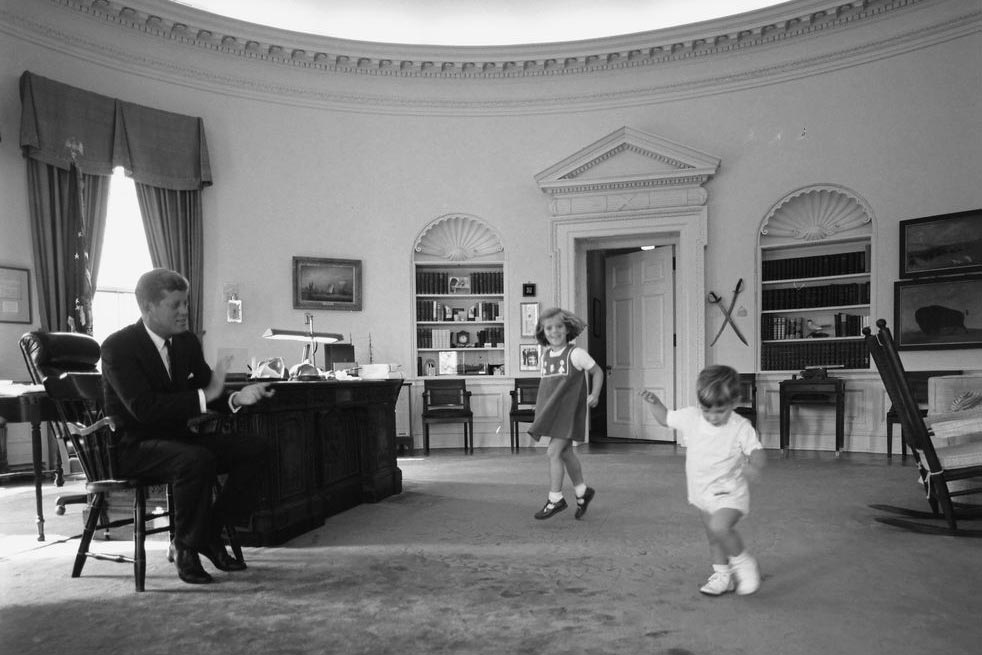
Kennedy with Caroline and John Jr. in the Oval Office in 1962. (Photo by Cecil Stoughton, White House Photographs, John F. Kennedy Presidential Library and Museum)
The president frequently played word games with Caroline, who was 3 when the family moved into the White House, and John Jr., who was an infant.
In the recording below, the children – Caroline, age 6 and John Jr., age 2 – interrupt Kennedy as he is dictating a memo about Vietnam. You can hear them chattering to the president as he asks questions about the seasons, their trip to Hyannis Port, Massachusetts, and Caroline’s toy horses.
“It’s a very cute moment, and it is reminiscent of his mother, who used to ask questions and play word games with JFK and his siblings at the dinner table,” Perry said.
The timing, Perry points out, is very poignant. Kennedy was assassinated in Dallas just a few weeks after the recording.
3. One of the Kennedy sisters married a Hollywood star.
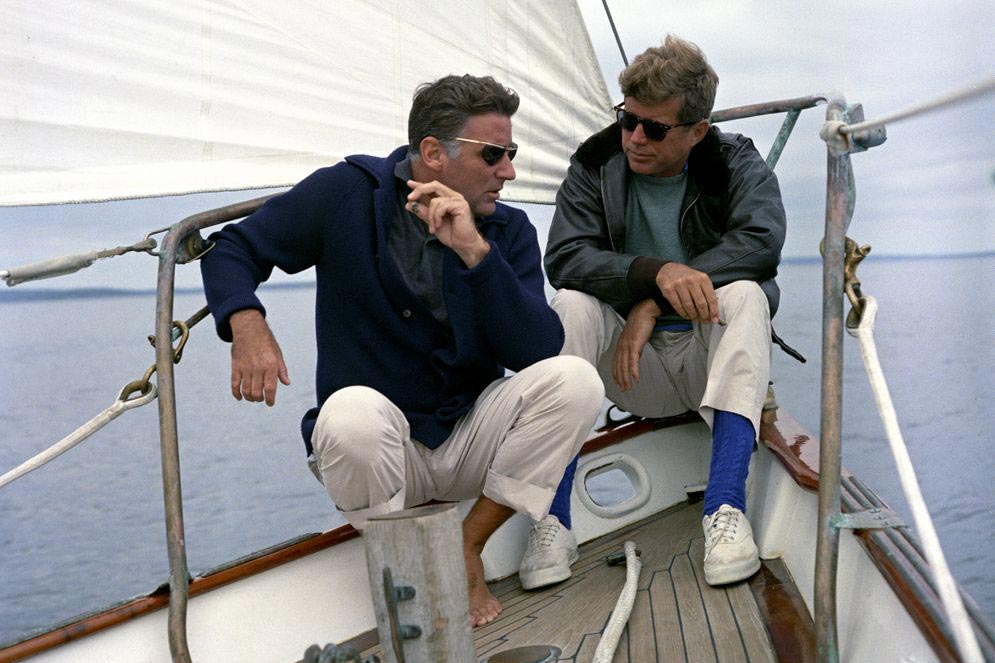
The president, right, with brother-in-law Peter Lawford on a U.S. Coast Guard yacht. (Photo by Robert Knudsen, White House Photographs, John F. Kennedy Presidential Library and Museum)
Kennedy’s “Camelot” presidency is well-known for its Hollywood glamour. Some of that came from the president’s younger sister Patricia Kennedy Lawford’s first husband, British actor Peter Lawford. Lawford ran with Frank Sinatra and his “Rat Pack” and introduced the president to that crowd. Sinatra became one of JFK’s good friends and, infamously, introduced him to Marilyn Monroe.
“The Lawford marriage really helped Kennedy get his foot in the door in Hollywood,” Perry said.
Among other roles, Lawford played Laurie in a 1949 adaptation of “Little Women” opposite Elizabeth Taylor, who played Amy March.
4. Two Kennedy sisters received the Presidential Medal of Freedom.
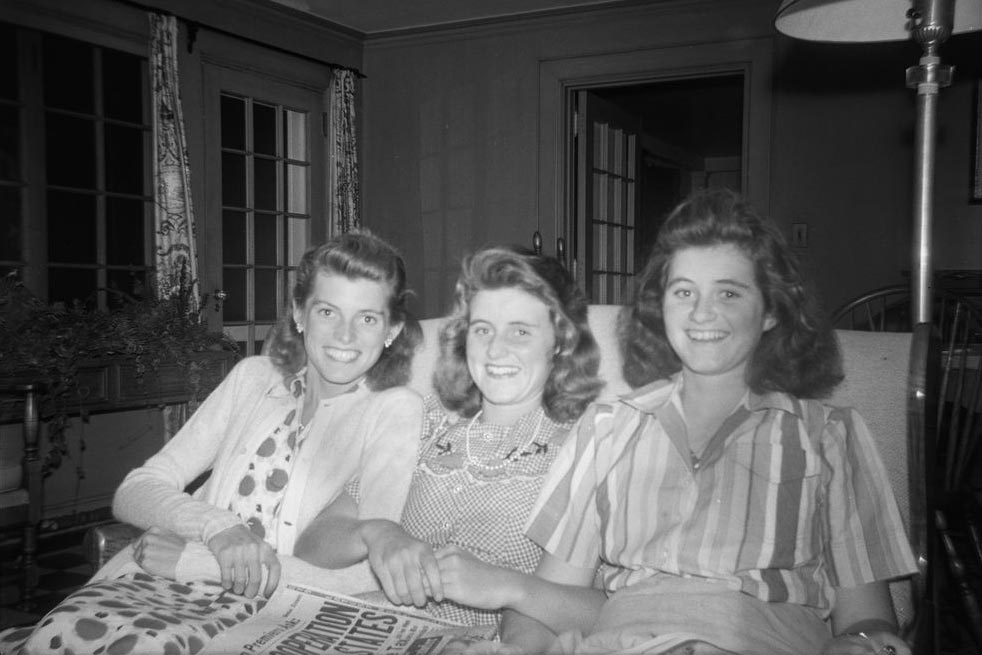
From left, sisters Eunice Kennedy, Kathleen Kennedy and Jean Kennedy in 1941. (Copyright John F. Kennedy Library Foundation. Kennedy Family Collection. John F. Kennedy Presidential Library and Museum)
President Kennedy established the Presidential Medal of Freedom in 1963 as the nation’s highest civilian honor. He selected the first three recipients, but was assassinated before he could formally bestow the medals, which were ultimately given out later that year by President Lyndon B. Johnson.
In the decades that followed, two of the president’s sisters received the medal that their brother established.
President Ronald Reagan awarded the Presidential Medal of Freedom to Eunice Kennedy Shriver in 1984 to recognize her work in creating and growing the Special Olympics, which she founded in 1968.
President Barack Obama awarded the medal to Jean Kennedy Smith in 2010 for her role in bringing peace to Northern Ireland as the U.S. ambassador to Ireland during the Clinton administration.
The Kennedys' Close Calls
5. Jacqueline Kennedy nearly married another “John” before she married JFK.
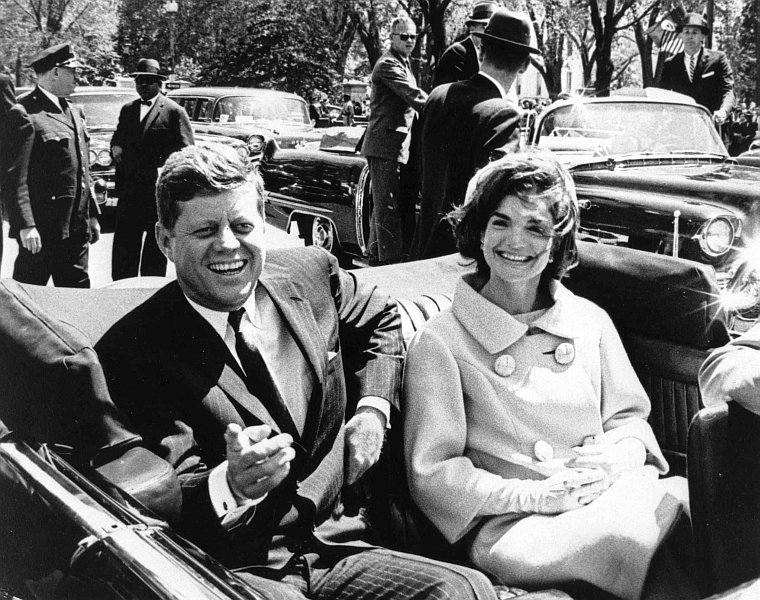
President and Mrs. Kennedy in a 1961 motorcade. (Photo by Abbie Rowe, National Park Service, in the John F. Kennedy Presidential Library and Museum)
Even for a big family, the Kennedys have experienced an astonishing number of tragedies and many near-misses, some with happier outcomes than others.
For example, the nation nearly missed having Jackie Kennedy as first lady. The young Jacqueline Bouvier was briefly engaged to John G. W. Husted Jr., a New York stock broker, in late 1951. She broke off the engagement after a few months and began dating then-Sen. John F. Kennedy about a year later. They married on Sept. 12, 1953.
“It seems the Jackie did not think John Husted would give her the life she wanted – perhaps in terms of money, but also in terms of excitement,” Perry said.
A letter that Perry owns provides a bit more detail. Kennedy wrote to her friend, Dan Samuel, a British-Israeli businessman and viscount, about the brief engagement.
“Things have been rather confused here – I was engaged to John Husted – and now I’m not anymore,” she wrote. “It wasn’t a very happy time for a while but now I know it was right to break it. I went into it much too fast and then it seemed very wrong. If it hadn’t affected another person, I’d say it was good that it happened – it made me grow up and I needed to do that.”
6. Ted Kennedy narrowly avoided dying in a plane crash. Twice.
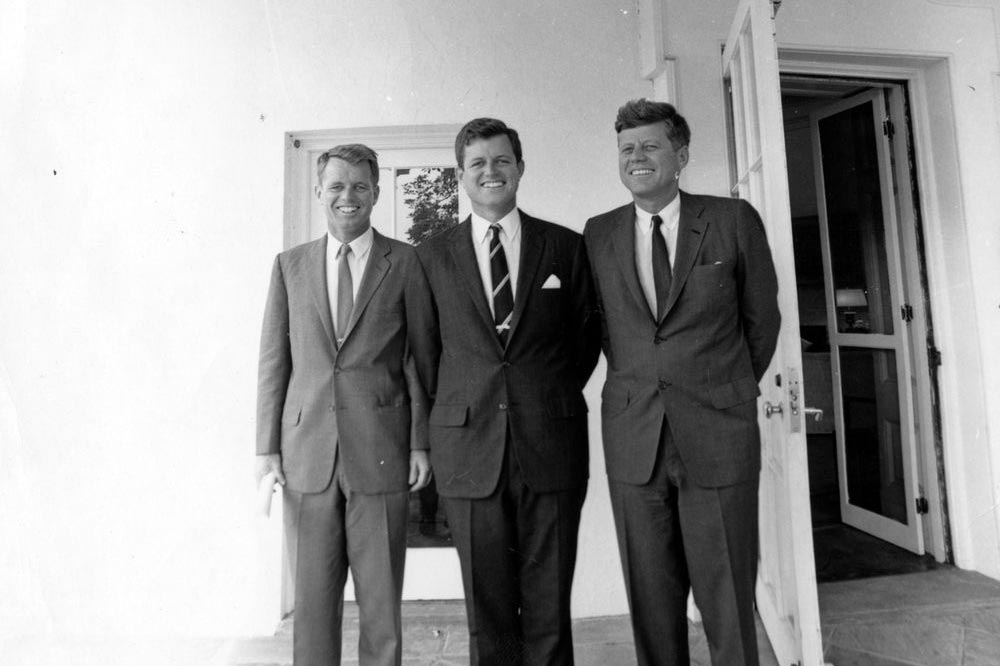
Ted Kennedy, center, with brothers Bobby and Jack at the White House. Ted was the only brother to survive to old age. (Photo by Cecil Stoughton, White House Photographs, John F. Kennedy Presidential Library and Museum)
In 1964, Ted Kennedy, a 1959 graduate of UVA's School of Law, survived a private plane crash that left him with a broken back and a collapsed lung. Thirty-eight years later, in 2002, Sen. Paul Wellstone offered Kennedy, who was on the campaign trail with him, a seat in a private jet bound for another event. Kennedy refused, later telling late night TV host Larry King that he had terrible memories of his earlier crash and was worried about the weather.
Those worries proved justified. Wellstone’s plane went down, killing the senator, his wife, his daughter and everyone else on board.
Though Ted was spared, many in his family were not as fortunate. Oldest brother Joe Kennedy Jr. was killed when his plane exploded in World War II; sister Kathleen “Kick” Kennedy was killed in a private plane crash in France in 1948; and John F. Kennedy’s only son, John F. Kennedy Jr., met the same fate in 1999, along with his wife and sister-in-law. Bobby Kennedy’s father-, mother- and brother-in-law also all died in crashes.
“The Kennedys have really, really bad luck with planes,” Perry said.
7. Caroline Kennedy was nearly killed by an IRA terrorist bomb in London.
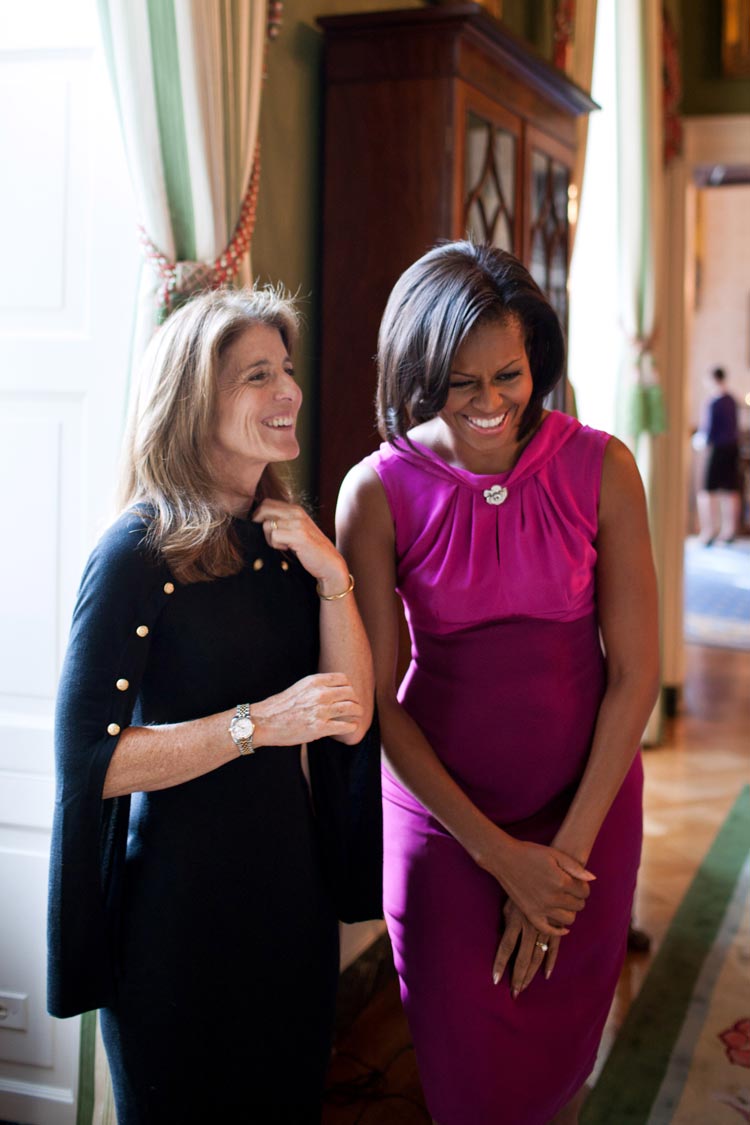
Caroline Kennedy Schlossberg with First Lady Michelle Obama in the White House in 2011. (Official White House Photo by Lawrence Jackson)
JFK’s daughter stayed with family friends Sir Hugh and Antonia Fraser while interning in London in 1975. During that time, the Irish Republican Army placed a bomb under Hugh Fraser’s car.
Kennedy, who was home that morning, had planned to ride with Fraser to work. However, the bomb inadvertently detonated before either of them left the house. The blast killed a doctor, Gordon Hamilton Fairley, who was out walking his dog. Kennedy was left shaken, but safe.
“I don’t believe the bomb was intended for her, but she certainly could have been in the line of fire,” Perry said.
Today, JFK’s daughter is the only living member of the president’s nuclear family. Like other members of the extended Kennedy family, she remains active in politics and civic life. Most recently, she served as the U.S. ambassador to Japan from 2013 to 2017, appointed by President Obama.
8. Joe Kennedy Jr. did not have to fly his fatal final mission in World War II.
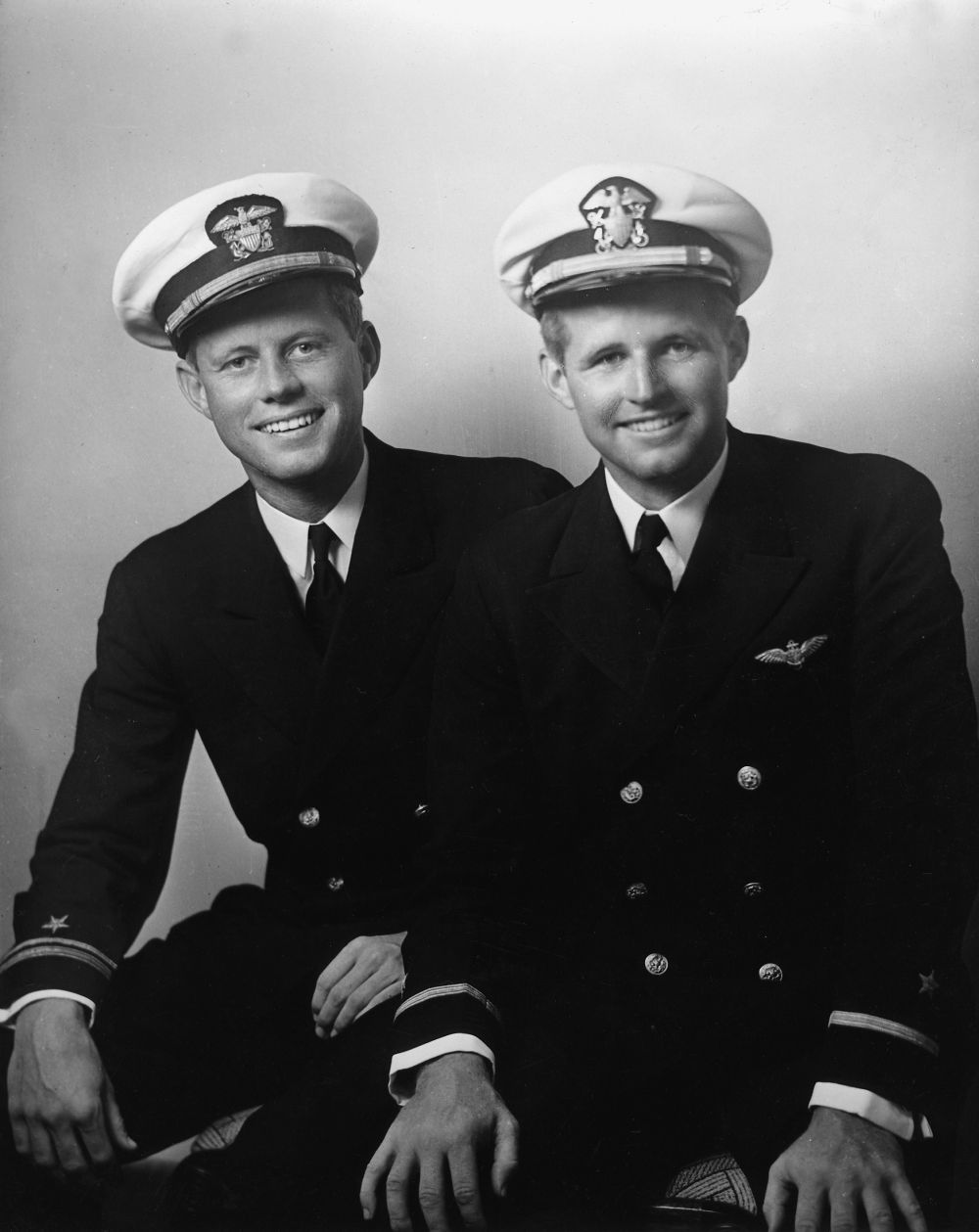
John F. Kennedy, left, with his older brother, Joseph P. Kennedy Jr., in 1942. JFK fought in the Pacific, while Joe Kennedy Jr. flew over Europe. (Photo by Frank Turner, Turgeon Studios)
The oldest Kennedy brother had completed the required number of missions on his deployment as a U.S. Navy pilot and was eligible to return to America on leave. In fact, the Kennedy family had assembled in Hyannis Port to welcome him home.
However, Kennedy wrote to say that he would be delayed because he had volunteered for a special mission, which he assured his parents was not dangerous.
Those assurances were false.
Kennedy’s mission was among the riskiest of the war, requiring him to fly an explosive-laden plane directly into a German rocket launching site in Normandy.
Kennedy and his fellow pilot were supposed to bail out at the last minute, but the plane exploded before they could, killing both men on Aug. 12, 1944.
9. Bobby Kennedy almost did not enter the 1968 presidential race.
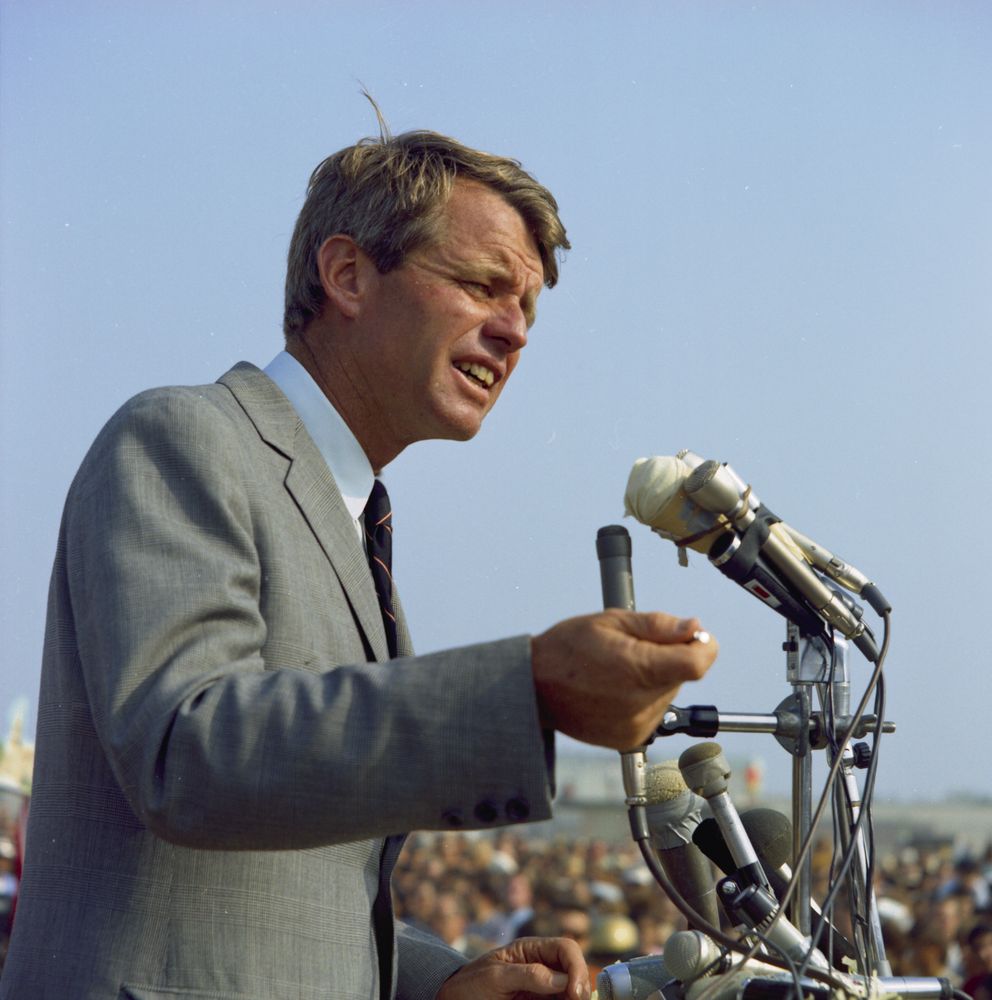
Bobby Kennedy delivers a speech in California while campaigning in 1968. (Photo courtesy Sven Walnum Photograph Collection)
In a recording for the Miller Center’s Presidential Oral History Program, Ted Kennedy said that his brother, Robert F. Kennedy, would not have entered the 1968 presidential contest if his competitor in the Democratic primary, Sen. Eugene McCarthy, had added urban and rural poverty to his agenda. Like Ted, Bobby is a graduate of the UVA School of Law, earning his degree in 1951.
Both McCarthy and Kennedy were committed to peace in Vietnam and would likely have split the vote among Democrats who favored peace. However, Kennedy was also particularly passionate about addressing poverty.
“When he ran for the Senate in 1964, Bobby began to take on the issue of urban and rural poverty,” Perry said. He developed the first public-private partnership to help bring new business into rundown areas of New York and made a famous trip to the Mississippi Delta in 1967, where he was appalled by living conditions he witnessed.
McCarthy evidently did not share Kennedy’s zeal. He refused to add the issue to his platform and Kennedy entered the race on March 16. He was assassinated three months later.
“As Teddy tells the story, Bobby would not have been assassinated – at least not in 1968 – if McCarthy had agreed to his request,” Perry said. “Who knows what would have happened? The world could have been a different place.”
Media Contact
Article Information
March 27, 2018
/content/nine-things-you-might-not-know-about-kennedys

